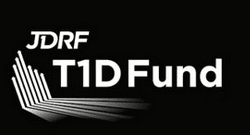
Last week, JDRF released a press release quietly announcing the creation of the JDRF T1D Fund, a for-profit investment fund. The release also announced the fund’s very first investment is Bigfoot Biomedical, which is led by ex-JDRF president Jeffrey Brewer. Bigfoot is one of nine artificial pancreas projects currently in human trials. However, it is the only AP project to receive this investment. According to the press, the JDRF T1D Fund is “taking ownership of a minority stake” in Bigfoot. No other investments have been made or announced.
This development is a very unusual move for an organization whose brand reputation and core capabilities, built over nearly half a century, have been fundraising and charitable support of T1D. Before determining whether this development is good or bad for the ultimate mission of finding a cure for T1D, there are many open questions, including strategic direction, ethical conflicts of interest, legal SEC/regulatory requirements, and perception among donors.
The JDCA contacted JDRF media for more information but as of publication time, they had not responded. See the link below for contact details.
WHAT WE KNOW TO DATE (BASED ON THE LIMITED AVAILABILITY OF PUBLIC MATERIALS):
- JDRF is referring to the fund as a “venture philanthropy vehicle.”
- $42 million is the size of the initial investment pool.
- $32 million of the initial investment pool is coming directly from JDRF (presumably, proceeds from JDRF fundraising activity).
- The remaining $10 million is from anonymous donors.
- The JDRF T1D Fund is supposed to be independent of the original JDRF, but it is clearly trading on the JDRF brand name, goodwill, and legacy.
- Six individuals are identified as the fund leaders, including two JDRF International Board Members and JDRF CEO, Derek Rapp.
- Mr. Rapp now finds himself in the unusual position of leading and managing the interests of the largest T1D non-profit, and, at the same time, a well-capitalized T1D for-profit investment fund.
A FEW OF THE MANY OPEN QUESTIONS THAT NEED TO BE ADDRESSED:
- Does this development signal a fundamental strategic shift in JDRF mission from philanthropy to investment return? What is the reputation risk to JDRF branding and donor relationship as it shifts to a for-profit fund?
- How much of the CEO's time will be used for selecting fund investments versus furthering the philanthropy mission?
- Will the JDRF research group staff be asked to evaluate a research project for financial return as opposed to efficacy alone?
- How much of the $32 million funding from JDRF (which represents almost half of the 2016 JDRF research grant allocation) comes directly from donor charitable generosity? Is this an appropriate use of fundraising proceeds?
- Were JDRF donors made aware that their contributions may be invested in a highly speculative venture capital business?
- The JDRF T1D Fund and JDRF will be competing for donors and funding. How will this be resolved?
- What are the regulatory requirements to which the fund must abide? SEC registration? Quarterly reporting?
- Do JDRF T1D Fund investments put the tax exempt status of JDRF at risk? Will this impact the tax-deductibility of contributions?
- What happens when long-standing investments are rendered inferior to new developments?
- How will the professional managers of the fund be compensated? Fundraising? Financial return? Cure breakthrough?
We will provide updates as these questions are addressed and answered.
Link to the JDRF T1D Fund Press Release: http://www.jdrf.org/about/t1dfund/jdrf-launches-early-stage-investment-fund-catalyze-development-commercial-type-1-diabetes-therapies/
